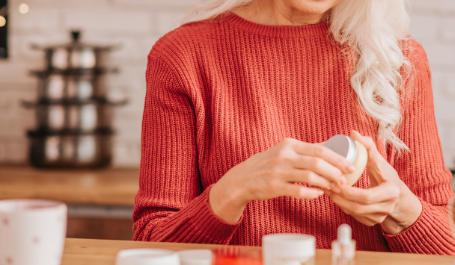
A common frustration our hand and upper extremity specialists address is an increased weakening in gripping or pinching objects. Simple tasks, such as opening jars or turning doorknobs, can become painful and uncomfortable. Symptoms in the hand can also include sharp or burning pain when gripping or pinching, along with swelling, stiffness, and limited motion at the base of the thumb. So what is the cause of this frustrating pain getting in the way of completing everyday activities with ease?
THUMB ARTHRITIS SYMPTOMS
These symptoms are caused by arthritis in the joint at the base of the thumb. Also known as carpalmetacarpal (CMC), the joint at the base of the thumb is experiencing breakdown of cartilage resulting in bone on bone friction. Unfortunately, once cartilage has broken down in our joints, it cannot be built back up again. Arthritis is a progressive, degenerative disease, and the condition may worsen over time. There are, however, a few things that can be done to help relieve pain so that the arthritis does not interfere with life as much.
DIAGNOSIS
In most cases, a diagnosis can be made based on a physical exam and x-rays. Your doctor will ask you about your symptoms, any prior injury, pain patterns, or activities that aggravate the condition. During the examination, if pain or a gritty feeling results from various tests, or if a grinding sound (crepitus) can be heard, the bones are rubbing directly against each other. An x-ray may show deterioration of the joint as well as any bone spurs or calcium deposits that have developed. Many people with arthritis at the base of the thumb also have symptoms of carpal tunnel syndrome.
TREATMENT OPTIONS FOR THUMB ARTHRITIS
There are many non-surgical treatments which can be quite effective. Many patients are able to manage the pain conservatively. Surgery is a good option when non-surgical treatments fail to provide relief and the pain is impacting your life and the function of your hand. Treatment varies depending on each patient’s goals and symptoms. The following are nonsurgical treatment options:
- Activity modification
- Massage
- Over the counter NSAID’s (ibuprofen or naproxen)
- Anti-inflammatory herbs such as turmeric or ginger
- Topical pain relief creams/gels
- Occupational/physical therapy
- Corticosteroid injections
- Prescription anti-inflammatory medications
- A supportive splint to limit the movement of your thumb, and allow the joint to rest and heal. The splint may protect both the wrist and the thumb. It may be worn overnight or intermittently during the day.
If these treatments are not working, surgery may provide pain relief and/or improved function. Speak with a hand specialist who can work with you to create the best treatment plan.
Learn about conservative treatment options and the surgical procedure called a carpalmetacarpal (or CMC) arthroplasty in this video.





